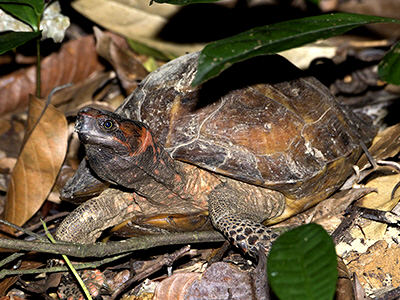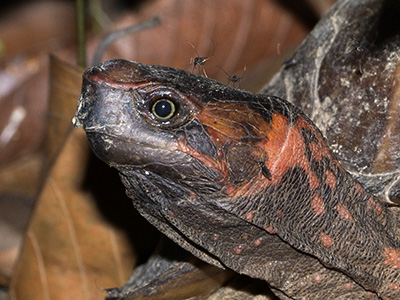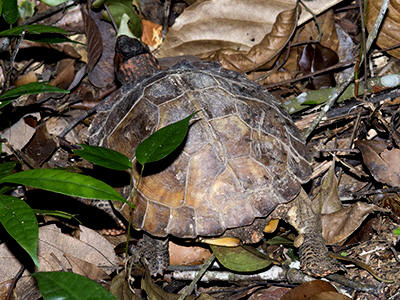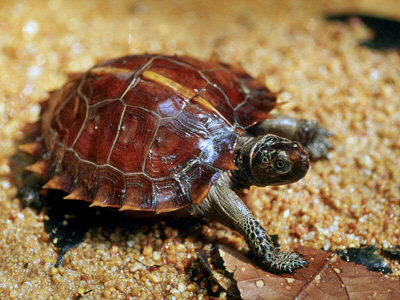
Fig 1

Fig 2

Fig 3

Fig 4
|
Family : GEOEMYDIDAE
Species : Heosemys spinosa
Maximum carapace length : 22 cm
The Spiny
Terrapin, or Spiny Hill Terrapin, is largely a forest floor dweller. It is well camouflaged amongst
leaf litter, making occasional forays to streams and puddles. It feeds
mainly on fallen fruits and other vegetation, but will eat animal matter if
available.
The attractive juveniles
have a carapace which is heavily serrated at the margin, but in adults this feature is
reduced to small serrations only on the rear margin of the carapace.
The head of both adults and juveniles bears a distinctive arrangement of
reddish spots and blotches on the snout and behind the eye.
Adults can be identified by the reddish, or sometimes yellowish, markings on
the head and neck and the reddish spot behind the eye.
Juveniles and adults have a vertebral keel along
the back of the carapace.
The species ranges from
Myanmar, Thailand, Peninsular Malaysia and Singapore to Borneo, Sumatra
and adjacent islands.
Figs 1 to 3 : Specimen from Gunung Pulai, Johor, Peninsular Malaysia showing
the typical arrangement of red markings on the head and neck. Many
mosquitoes were observed on the skin and carapace of this turtle, as seen in
Figure 2.
Fig 4 : Juvenile with serrated shell, next to a sandy forest stream in Singapore's
central forests.
References :
Cox, van Dijk, Nabhitabhata, Thirakhupt, 1998. A photographic Guide to
Snakes and Other Reptiles of Peninsular Malaysia, Singapore and Thailand.
New Holland.
Das, I., 2010. A Field Guide to the Reptiles of South-east Asia. New Holland
Publishers (UK) Ltd.
Manthey U., Grossmann W., 1997. Amphibien und Reptilien Sudostasiens. Natur
und Tier - Verlag.
|